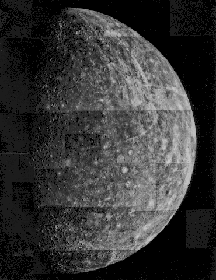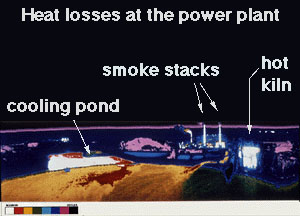Exploratour - The Archean Age
Click on image for full size
NASA
In addition to being hot, the surface of the Earth was being cratered. Even though the solar system was finished forming, there were still probably a lot of smaller planetesimals and debris around, too. This debris was still able to make a mark on the surface of the Earth. The gravity of the large planets would attract nearby planetesimals, which would hit the planets and leave a crater on the planet's surface.
When we look at images of many of the planets such as Mercury, shown here, we see all sorts of circular craters on the planet surfaces. Most of these craters were probably formed at this period of history. The cratering eventually tapered off, even though craters are still formed on planetary surfaces today.
Subsequent evolution of a planet's surface, driven by activity within the planet itself (if the planet were still active), would wipe out any evidence of this period of cratering. Thus scientists can often trace a planet's age by counting the amount and size of the craters on the surface.
This is page 3 of 10












